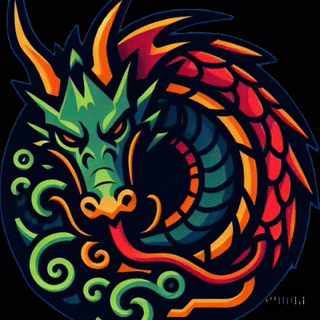The Hierarchy of Inca Gods: An Exploration of Andean Spirituality
Introduction
The Inca civilization, which flourished in the Andean region of South America from the early 15th century until the Spanish conquest in the 16th century, had a deeply spiritual worldview centered on a pantheon of gods. These deities governed various aspects of life, nature, and the cosmos. Understanding the hierarchy of Inca gods provides insight into their religious structure, societal organization, and cultural traditions. This paper explores the divine hierarchy of the Incas, outlining key deities, their roles, and their significance within Andean spirituality.
The Supreme Deity: Viracocha
At the pinnacle of the Inca religious hierarchy was Viracocha, the creator god. He was believed to have fashioned the universe, the sun, moon, stars, and humanity itself. Unlike other deities, Viracocha was not tied to a particular natural phenomenon but was rather an abstract, omnipotent force. According to Inca mythology, he emerged from Lake Titicaca, created the first civilizations, and then disappeared across the ocean, promising to return one day.
Scholarly Reference:
Bauer, Brian S. The Sacred Landscape of the Inca: The Cusco Ceque System. University of Texas Press, 1998. Link
The Sun God: Inti
Beneath Viracocha in the divine hierarchy was Inti, the sun god and the most widely worshiped deity in the Inca Empire. Inti was considered the direct ancestor of the Inca rulers, who claimed divine descent from him. The great Temple of the Sun, Coricancha, in Cusco, was dedicated to Inti, and vast ceremonies like the Inti Raymi festival honored him annually. As the god of the sun, Inti was associated with warmth, growth, and agricultural prosperity.
Scholarly Reference:
Urton, Gary. At the Crossroads of the Earth and the Sky: An Andean Cosmology. University of Texas Press, 1981. Link
The Moon Goddess: Mama Quilla
The counterpart to Inti was Mama Quilla, the moon goddess and protector of women and marriage. She was crucial in Inca cosmology as the regulator of time and calendars. Her light was believed to provide guidance at night, and eclipses were interpreted as a sign of celestial distress. Worship of Mama Quilla was particularly strong among priestesses and noblewomen.
Further Reading:
Zuidema, R. Tom. Inca Civilization in Cuzco. University of Texas Press, 1990. Link
The Thunder God: Illapa
Illapa, the god of thunder, lightning, and rain, was another essential deity, especially in the agricultural economy of the Incas. He was often depicted as a warrior carrying a club and a sling, striking the sky to produce storms. Farmers prayed to Illapa for rain, ensuring good harvests. His cult was prominent in the highlands, where unpredictable weather could impact food supply.
Further Reading:
Salomon, Frank & Schwartz, Stuart B. The Cambridge History of the Native Peoples of the Americas: South America, Vol. III. Cambridge University Press, 1999. Link
Earth Mother: Pachamama
Pachamama, or Mother Earth, was a central deity in the daily lives of the Andean people. She was revered as the goddess of fertility, agriculture, and the land itself. Even today, modern Quechua and Aymara communities continue to honor Pachamama through offerings, rituals, and ceremonies such as the Challa, where people give thanks by pouring libations into the ground.
Further Reading:
Gose, Peter. Deathly Waters and Hungry Mountains: Agrarian Ritual and Class Formation in an Andean Town. University of Toronto Press, 1994. Link
The Underworld God: Supay
Supay was the ruler of Uku Pacha, the Inca underworld. Unlike the Christian concept of Hell, Uku Pacha was not necessarily a place of suffering but rather a realm of the dead and the unborn. Supay was associated with both death and the mining industry, as the Incas believed the depths of the earth contained his domain. His worship persisted even after the Spanish conquest, blending with Catholic influences.
Further Reading:
Silverblatt, Irene. Moon, Sun, and Witches: Gender Ideologies and Class in Inca and Colonial Peru. Princeton University Press, 1987. Link
Conclusion
The Inca pantheon reflects a highly structured religious system deeply intertwined with nature and societal governance. Viracocha’s supremacy, Inti’s centrality, and the various deities governing celestial, earthly, and underworld domains reveal a civilization with an advanced understanding of cosmology and human existence. The endurance of these beliefs, even after the fall of the Inca Empire, underscores their lasting influence on Andean culture.
Suggestions for Further Research
The role of the priesthood and religious ceremonies in Inca society.
The influence of Inca religious beliefs on modern Andean spiritual practices.
Comparative studies between Inca deities and those of other indigenous American cultures.
By understanding the hierarchy of Inca gods, scholars and general readers alike can gain deeper insights into one of history’s most fascinating civilizations.
For more scholarly sources on Andean religion, visit:
Latin American Network Information Center (LANIC)
480-366-3550 (Domain Sales)
© SDBEST LLC, 2025. All rights reserved.
Sponsorship Disclosure
Terms of Service
